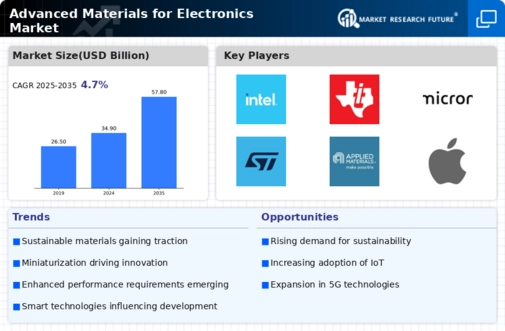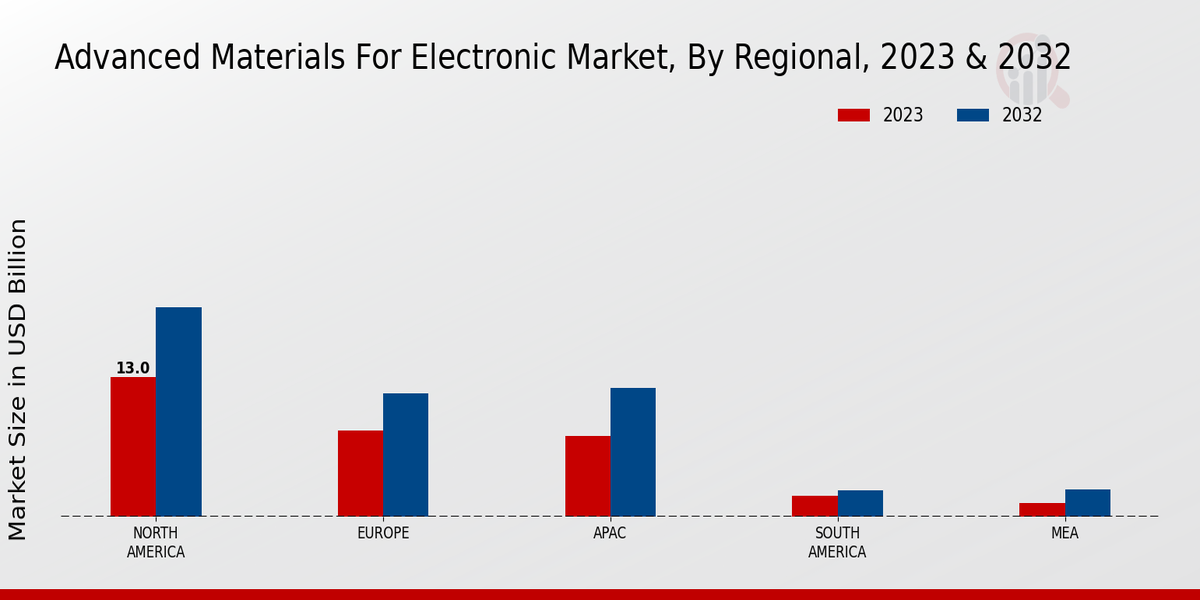The Advanced Materials for Electronic Market is characterized by a dynamic and competitive landscape driven by technological advancements and the growing demand for high-performance electronic components. This market encompasses various materials that are essential for the production and enhancement of electronic devices, including semiconductors, conductive materials, and advanced polymers. As industries continue to evolve towards greater efficiency and sustainability, companies within this sector are investing significantly in research and development to innovate their product offerings and meet the needs of their customers.
The competitive insights reveal a blend of established players and emerging entities, all vying for market share by leveraging advanced technologies, strategic partnerships, and supply chain efficiencies.Intel has carved out a significant presence in the Advanced Materials for Electronic Market thanks to its robust portfolio of advanced materials that are integral to semiconductor manufacturing. The company is recognized for its immense investment in research and development, which enables it to stay at the forefront of technology trends.
Intel's strengths lie in its ability to produce high-quality materials that cater to the performance requirements of modern electronic devices, including microprocessors and integrated circuits. Furthermore, Intel's strong brand reputation, coupled with its extensive network and collaborations with various suppliers, positions it favorably in the competitive arena.
This allows the company to address emerging challenges such as miniaturization and energy efficiency while also exploring new material innovations that can enhance electronic performance.Texas Instruments is another key player in the Advanced Materials for Electronic Market, known for its comprehensive range of semiconductor solutions and supporting materials that are critical for electronic applications. Texas Instruments has a strong market presence attributed to its innovative approaches to developing materials that support high-performance analog and digital signal processing. The company excels in optimizing its manufacturing processes, which ensures consistency and quality in its product offerings.
With its established reputation for reliability, Texas Instruments enjoys strong customer loyalty as it continues to expand its capabilities in advanced materials. The company's commitment to sustainability, alongside its focus on advancing technology, positions it to meet the evolving demands of the electronic market and maintain a competitive edge against other industry players.














